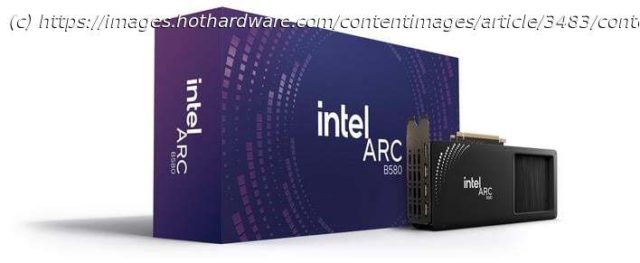Intel’s second generation discrete Arc GPUs based on Battlemage are due to arrive in a couple of weeks and we’ve got the full scoop.
Key Takeaways:Updated Xe2 GPU architecture will offer increased performance, efficiency and compatibility.Intel Arc B580 and B570 graphics cards are priced aggressively and target the mid-range market.Arc B580 Cards will be available on December 13, with the B570 arriving in January ’25.
Although cards won’t hit store shelves for a couple of weeks, Intel is officially taking the wraps off of its first wave of Battlemage-based discrete GPUs, the Arc B570 and B580. If you recall, the first salvo of Arc discrete GPUs that launched in late 2022 were based on a graphics architecture, codenamed Alchemist. Battlemage is up next, followed by Celestial, then Druid – assuming everything goes to plan, that is. A – B – C- D, and so on and so forth.
In a change from the Arc A-series Alchemist launch, however, Intel is releasing what was previously its mid-level 500-series cards first. The Arc A750 and A770 came first with the previous-gen and the A580 came later – at least here in the states. This time around, the Intel Arc B580 will spearhead Battlemage’s discrete release, followed a little later by the B570. Whether or not higher-end B700 series GPUs come at a later time remains to be seen. Intel New Xe2 GPU Architecture
Before we dive into the Intel Arc B580, we should explain what makes Battlemage different from Alchemist. The official name for the graphics architecture based on Battlemage is Xe2. This is not our first look at Xe2, though. The Xe2 graphics architecture actually debuted in the iGPU on Lunar Lake Core Ultra 200V series mobile processors, but with the Arc B580 things are scaled up considerably and the GPU is paired to its own pool of memory for vastly improved performance.
The Intel Xe2 Graphics architecture is essentially an upgrade over the previous-gen in every meaningful way. The architecture is better suited to modern gaming workloads and utilization – and ultimately performance – should be higher in virtually all use cases.
Part of the reason for better / increased utilization is support for additional advanced graphics features. Xe2, for example, supports «eXecute Indirect», which is a key feature of DirectX 12 and Vulkan. This feature allows a batch of commands to be sent to the GPU, instead of having the CPU directly issue every single command individually, in sequence. With eXecute Indirect, commands are sent to an indirect buffer and the «ExecuteIndirect» command then tells the GPU to process those commands at the right time.
Even though indirect execution has been a part of DirectX since Direct3D 11.0, the original Xe architecture didn’t support it in hardware. That meant it had to be emulated in the software. Lacking support for this feature is one of the reasons that performance of Arc A-series GPUs can be inconsistent in some game titles.
In addition to support for additional features, Intel analyzed how Xe behaved with a wide array of workloads and tweaked numerous parts of the architecture to optimize performance and efficiency. Intel Xe2 arch also features a larger 256K L1 cache to help keep more data close to the cores and keep them fed during periods of higher utilization.
Like the previous-gen Xe architecture, Xe2 is divided into render slices, which include three or more Xe Cores as well as fixed-function graphics hardware that handles things like geometry, texturing, and rasterization. Scaling up the number of slices is how Intel can build larger, more powerful discrete GPUs.






